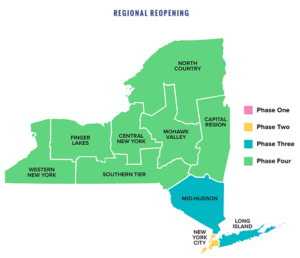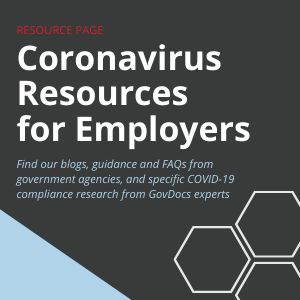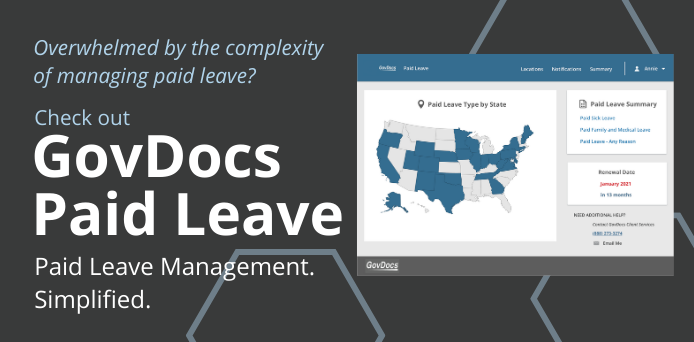EMPLOYMENT LAW NEWS
COVID-19 Update: New York Reopening Plan
By Kris Janisch
Published July 2, 2020

New York State uses a regional and phased approach to reopening businesses under the coronavirus pandemic.
As spikes in coronavirus cases rise in many of the country, New York City has opted not to allow indoor dining in early July as planned, while other parts of New York State continue to reopen businesses.
The fluid situation in New York is reflected across the U.S., with reopening plans rolled back in several states, including Texas, Florida, parts of California and elsewhere.
Here, we will examine businesses reopening in New York State, the world’s 10th largest economy, as the nation’s governors refine and update plans to allow companies to operate again in the wake of the COVID-19 pandemic.
New York State Reopening Plan
Dubbed New York Forward, the state’s reopening plan divides the state into regions. Each region is then assigned a phase based in its readiness in relation to COVID-19.
 Every region in New York State is out of Phase 1, and only New York City remains in Phase 2. (New York City specifically will be discussed below.)
Every region in New York State is out of Phase 1, and only New York City remains in Phase 2. (New York City specifically will be discussed below.)
Phase 3
Under Phase 3 of the plan, the state focuses on two industries:
- Restaurants and food services
- Personal care, i.e., non-hair related salons such as spas, tattoo shops, nail salons, etc.
For employers wondering whether their business is allowed to operate, New York has created a “Reopening Lookup Wizard” tool.
Restaurants and Food Services
For employers with restaurants and food services in Phase 3 regions, the state developed both mandatory guidelines and best practices.
- Limiting indoor capacity to 50 percent
- Arranging outdoor tables at least six feet away from each other
- Mask-wearing by employees
- Mask-wearing by patrons unless seated
- Separate entrances for employees and patrons, when possible
- And more
Meanwhile, best practices for restaurants and food services include the typical suggestions about social distancing, modified work stations, etc., as well as industry-specific guidance about not having more than one employee in a walk-in refrigerator, encouraging customers to place orders by phone, contactless pickup and more.
Personal Care
For personal care businesses under phase 3, many of the same guidelines are in place — six-foot social distancing, mask-wearing by employees and customers, etc.
Here again, however, there are guidelines for the industry:
- Closing waiting rooms (mandatory)
- Six feet between customer seating areas (mandatory)
- Posting designs on windows of tattoo parlors (recommended)
- Implementing by-appointment-only procedures (recommended)
Phase 4
The regions of New York under the Phase 4 designation allow for further openings, including:
- Higher education
- Low-risk outdoor arts and entertainment
- Low-risk indoor arts and entertainment
- Media production
- Professional sports competitions with no fans
As expected, Phase 4 features fewer mandatory guidelines for reopening — below are some of the highlights for each category. Check the state’s website for recommended best practices.
Higher Education
- Masks for people within six feet of another (roommates excluded)
- Figuring out needs for those in quarantine
- Following state health guidelines for gyms, dining halls, etc.
Low-Risk Outdoor Arts and Entertainment
New York outlines examples of this industry as parks, zoos, historical sites, outdoor museums and the similar institutions.
Mandatory guidelines include:
- Operating at fewer than 33 percent capacity
- Limited indoor capacity
- Social distancing (except those of the same household)
- Masks for patrons when within six feet (at cash registers, for example)
- Employees must wear masks
- Closure of high-risk exhibits
Low-Risk Indoor Arts and Entertainment
These businesses New York calls indoor museums, aquariums and more. Mandatory guidelines include:
- Limited to 25 percent occupancy
- Employees must wear masks
- Calculating and enforcing max occupancy for smaller exhibits
- Close high-risk interactive exhibits
Media Production
For industries in media production — movie, TV streaming productions and similar industries — the mandatory guidelines are more robust.
- Presence of cast and crew limited to 50 percent
- Ensuring social distancing
- Following safety protocols for hair, makeup and more
- Mask-wearing, with exceptions for performers
- Banning non-essential personal from locations
- Must be able to secure locations from the public
Pro Sports with No Fans
Among the most widely discussed industries during the pandemic has been professional sports. As the heading here indicates, no fans is one of the mandatory guidelines, but there are several others, including:
- Social distancing except when necessary
- Mask-wearing except under certain circumstances
- Mask-wearing on the sidelines
- Not allowing fans to congregate near the venue
- Allowing only essential personnel on-site
- Limiting the number of people on the field primarily to athletes and coaches
New York City Reopening Plan
The lone region in the state still under Phase 2, New York City recently put a pause on restaurants reopening outdoor seating. Much remains closed:
- Malls
- Indoor bar and restaurant service
- Large gather/event venues
- Gyms and fitness centers
- Casinos
- Movie theaters (except drive-ins)
- Amusement parks, zoos, carnivals, bowling alleys, etc.
For the businesses that can begin operating again, New York offered mandatory guidelines and recommendations, which are much more robust than those in Phases 3 and 4. Employers can check the links below for further guidance based on their industry.
- Offices
- Real estate
- Essential and Phase 2 in-store retail
- Vehicle sales, leases and rentals
- Retail rental, repair and cleaning
- Commercial building management
- Hair salons and barbershops
- Outdoor and takeout/delivery food services
Phase 3 expected to begin the week July 6, though that may not include indoor restaurant service.
Conclusion
The best laid plans can still go awry as the country works through the coronavirus pandemic.
Surges in certain areas may lead to reversals on opening decisions, further complicating planning for employers.
Maintaining compliance with local regulations will be paramount in the months to come.
This Employment Law News blog is intended for market awareness only, it is not to be used for legal advice or counsel.
Keep Informed
with GovDocs Labor Law News

What is GovDocs?
GovDocs simplifies employment law compliance for large, multi-jurisdiction employers in the U.S. and Canada. The GovDocs software platform integrates three solutions in one convenient place to help you master the employment laws impacting your business. Whether you manage a postings, minimum wage or paid leave program, our products cut through research time, provide proactive insights into the everchanging landscape of employment laws and reduce the risk of noncompliance. The company is headquartered in St. Paul, Minn.
Have fewer than 30 locations?
The GovDocs Poster Store simplifies posting compliance for employers with less than 30 locations across all industries, offering a variety of posting products to meet your labor law compliance needs.



